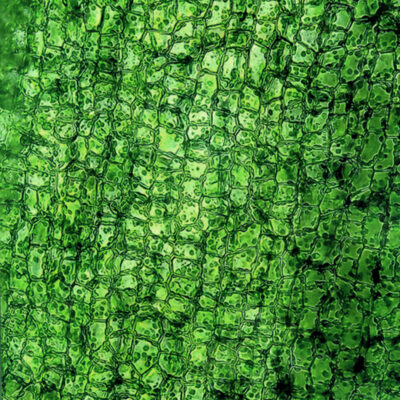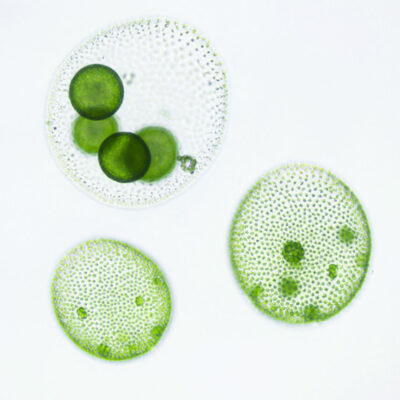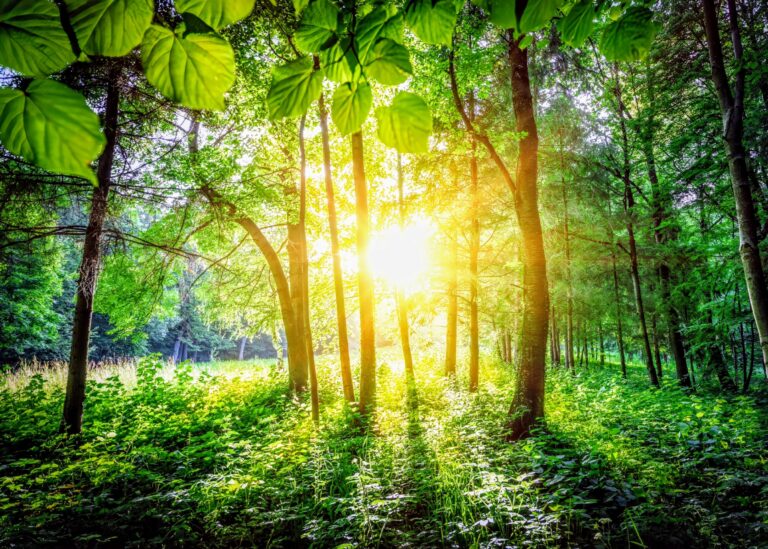

In fact, photosynthesis is the most critical biological reaction for life on earth as we know it. It provides energy for plants, produces their biomass, which, in turn, provides oxygen to our earth’s atmosphere. So, you see, without light, no life.
All of this started about 600 million years ago. So-called cyanobacteria, which used photosynthesis to generate energy, were absorbed by a smart ancestor of today’s plant. They didn’t do this because they were hungry but instead because they wanted to use this extremely efficient way of generating energy for themselves. Inside the cyanobacteria, they developed into chloroplasts. And they, in turn, multiplied there in such numbers that the first “light-eating” plant cells were born. This paved the way for the emergency of algae and all other green creatures on earth. Crazy!

WHY DO PLANTS NEED LIGHT?
Plants are frugal. They are autotrophic organisms, which means that they only require inorganic substances for their growth. Light, water, and minerals. That’s it! They need light for two reasons: to produce energy as well as to set their biological clock so that their metabolism run smoothly. You may already have an idea of what we are getting at: good old photosynthesis. What was that again?
The thing about photosynthesis
Clever as they are, plants use light as a source of energy to form new organic compounds., or more precisely, to grow. In this process, they use water (H2O) and carbon dioxide (CO2), which they steal from the air, to produce glucose and oxygen. The glucose they need for their growth. Oxygen is just a waste product for plants – which is convenient for us humans.
Most photosynthesis takes place in the leaves. That’s where stuff is happening. Inside the cells of leaves are small chemical factories called chloroplasts. They get their carbon dioxide (CO2) through small openings in the leaves, so-called stomata, through which they also release oxygen (O2).
Plants trigger their chemical processes in response to the amount of light and darkness a plant is exposed to. Plant biologists refer to this as photoperiodism. Think of it as the plant’s ability to sense light. Plants do not have eyes but they do have photoreceptors — these are cells that contain a light-absorbing pigment. When these cells receive light, specific proteins are altered and cause changes in hormone production and growth. However, this varies depending on the plant species, meaning, that each plant experiences light.
DO DIFFERENT PLANTS NEED DIFFERENT AMOUNTS OF LIGHT?
The short answer is yes. And this is the best way to think through the light requirements of plants: Plants can be divided into three main groups:
- Short-day plants only bloom when the length of daylight drops below a particular critical threshold (usually 12 hours)
- Long-day plants only bloom when the amount of daylight lasts longer than their critical threshold of 12 hours
- Day-neutral plants have a flowering process that is not regulated by day length at all. Instead, these plants bloom when they are simply old enough too.
In the tropics as well as in subtropical deserts, where most of our house plants come from, most plants are short-day plants or day-neutral.
TROPICAL PLANTS

For plants, the tropics are a land of milk and honey. Water and nutrients exist in abundance. The only thing that can be a problem is light. However, this is no reason to bury the flower in the sand.

Here are a few cool tricks that tropical plants developed to cut through the chase:
- Climbing: Some plants are natural acrobats! They root in the ground and climb up other plants, rocks, or walls with their thin branches. This way they improve light exposure to the leaves without the need to have load-bearing stems (like trees). Monstera and philodendrons, for instance, like to wrap themselves around moss stalks for this very reason.
- Dancing: These curious plants have a natural rhythm in their blood! Depending on the time of the day, they optimize photosynthesis through leaf movements. This way they increase or decrease their light exposure. Prayer plants, for example, fold their leaves upwards when it’s dark.
- Dazzle: Bright spots like the ones on a Begonia maculate, for instance, function like a prism that filters or absorbs light. This way they make more out of less (light).


SUCCULENTS AND CACTI

Succulents and cacti typically live in dry and sun-intensive environments such as deserts. To make do with the resources they have, these plants have developed a unique form of photosynthesis to store water, the so-called CAM photosynthesis. This doesn’t just sound fantastic; it is!
Most plants open their stomata during the day because that is when energy is received from the sun for photosynthesis. But plants living in very dry, hot environments, could lose dangerous amounts of water if they opened their stomata during the hot, dry days. In CAM photosynthesis, the plants only open the stomata at night when the temperature cools down and they evaporate less water. However, closing the stomata during the day means also that they do not get any CO2 for photosynthesis. This is why CAM plants, much like camels storing water for lean times, store CO2 as organic acid in their leaves during the night to use when the sun rises the next day. In this way, they still undergo ample photosynthesis for survival.
The only disadvantage is that this type of photosynthesis is much less efficient. This explains why cacti and succulents grow much more slowly.
Other tricks of the sun worshippers:
- Growing hair: Fluffy and air-filled hair has the sole purpose of scattering light. They appear snow-white and act as radiation shields.
- Growing thorns: Thorns are not just a defense mechanism against predators but also reflect light.
- Dance around: Some succulents move their petals to better deal with changing light intensity
LIGHT IS IT - BUT IS IT?
Have you ever wondered what all the fuzz about plants and different light spectrums is about? Here is a brief primer:
- Light is energy that presents as a form of electromagnetic radiation.
- It propagates in waves.
- Waves have different lengths, and the wavelength determines the color of light.
Humans can only see the light that falls within the visible region. White light, for instance, is actually made up of wavelengths in all colors of the rainbow. But we only see the color when it is reflected back to us by objects. A blue object reflects blue light. A green object reflects green light. The light itself appears white to us.
Plants, on the other hand, have a much broader sense of light. They have a photoreceptor that gives them the ability to “see” the different wavelengths in their actual colors. And they affect them in different ways.
Which light is critical for my plants?
Red light helps the plant to grow in length. Blue light, on the other hand, ensures bushier growth. The plant branches out more and remains smaller. However, blue light also helps to widen the stomata. This speeds up metabolism and promotes development and growth. At the very end of the spectrum, blue-violet and dark-red light are used by plants primarily for energy production.
Interested in the exact wavelengths? Here you go:
- Ultraviolet (340 to 400 Nm)
- Blue (400 to 500 Nm)
- Red (600 to 700 Nm)
- Dark red, also the the initial range of infrared (700 to 800 Nm)















